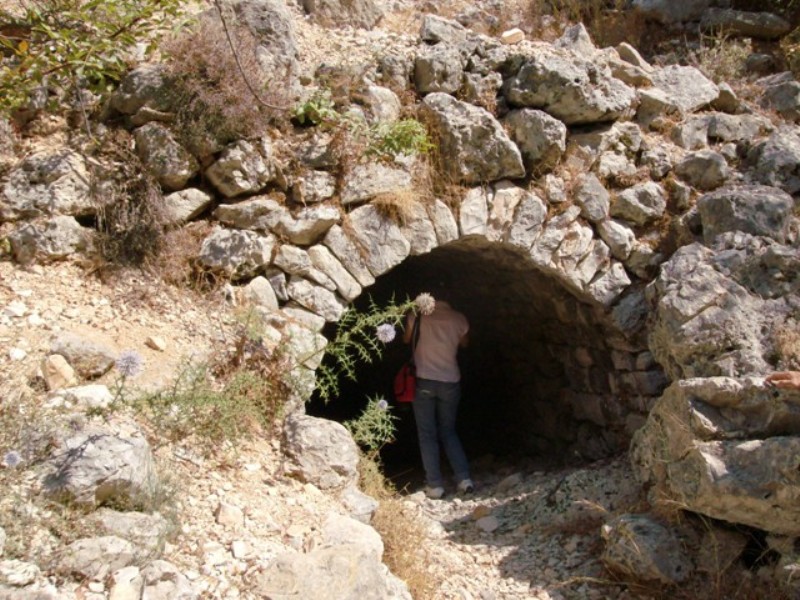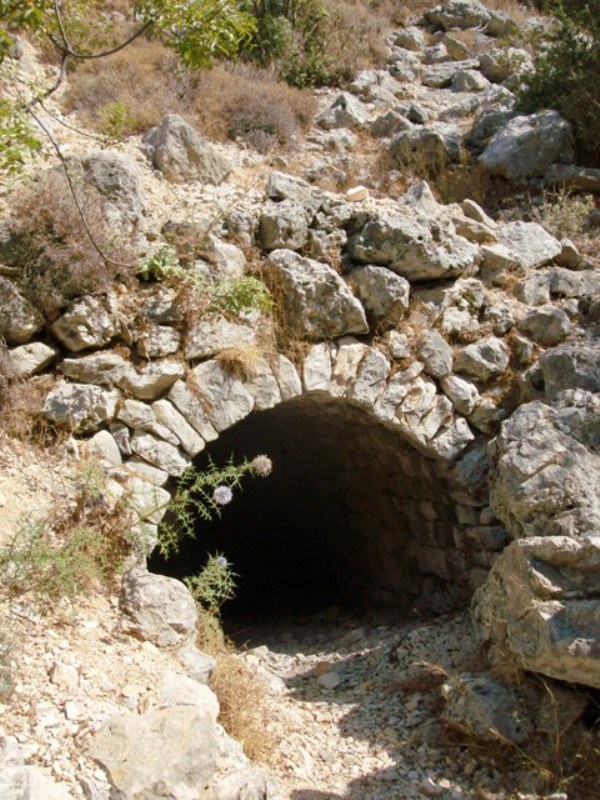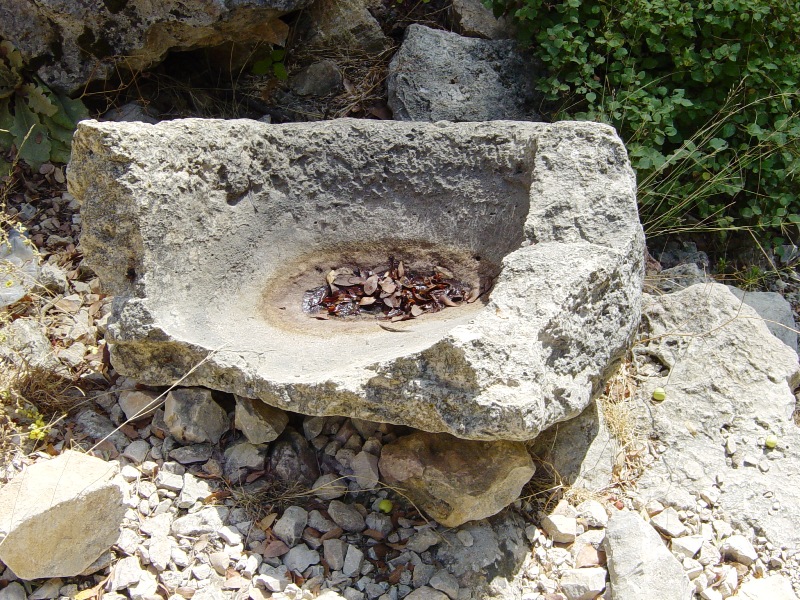Waterworks
The Spring Of Saint John Maroun is located about five meters inside a cave with a small basin-hole, conical in shape, that can store about 15-20 liters of water, always there… it never runs dry and keeps its level during all seasons. This phenomenon can be explained that this spring is the outburst in this calcareous layered structured soil from a larger reservoir that is fed by deep percolation through the mountains layered calcareous soil.

Hydria Virtual Museum
The average rainfall in the region exceeds 850 mm that occurs between Mid – October to Mid – March. Part of the rainwater infiltrates through the soil surface and seeps down in more than one direction through the soil pores and crevices deep. Once water reaches a weak soil surface layer it outbursts into this spring.
The locals refer to an old map in the monastery of Maad that shows the existence of a large underground lake of clear water which outbursts into the spring (refer to Annex).
Around the year 685 AD Bishop John Maroun was appointed as the first Maronite Patriarch, and he used the spring as a hermitage. The villagers believe that the Patriarch built an arched stone cellar over the spring and the historical references indicate that Patriarch John Maroun used to resort to that location for prayer and meditation. The spring was named after him in the following centuries.
Between 685 and 1300 the region was inhabited and the spring was used by the villagers to cover drinking, irrigation and all the house hold needs.
In 1299 there were battles between the Mamluks and the Crusaders in the area. During this period, the inhabitants were displaced from their villages to al Aakoura and al Mnaytra and Tannourine while the Mamluks brought Moslem families to live there. Those families also used the spring for drinking, irrigation and house hold use.
Starting 1550, the original inhabitants who were displaced began returning back to villages close to their home villages… By 1700, most of the inhabitants had bought back their lands.
In 1945 the Lebanese immigrant from Ghouma, Adeeb Basbous came back from the United States of America with the idea of pumping the water from the Saint John spring to the village. This project was never implemented due to a lack of funds on one hand and on the other, because the inhabitants of Ghouma were not convinced by this idea being naïve and disbelievers of its success.
Before the year 1965, the inhabitants of Ghouma and Mrah Al-Zayat used to collect rainwater on rooftops and to withdraw from the wells near their homes. They used the collected water for drinking, for house hold, for irrigating their crops and for their livestock. As this water was insufficient they resorted to Saint John Maroun spring whereby they used to carry it in urns especially during summer when the water is fresh and cold even during the very hot days. In 1965 the village of Ghouma was provided with a water network system so the inhabitants were relieved from the burden of going down to the spring especially that the road was rugged. Nowadays, the spring is been used as a source of water for shepherds grazing their goats and other animals in the area.
According to a recent technical report (By Musa N. Nimah, Consultant, December 2012), the water flow of the spring is estimated at 20-30 liters per hour. A water sample analysed by the Fanar Lebanese Agricultural Research Institute (LARI) had good results with only the airborne pathogens shown above the acceptable norm. This may be due to the following reasons:
- The spring is open to the public, field workers as well as animals and the hauling of water from the spring is done by containers that are not disinfected.
- The sampling bottle was not pasteurized, it was an empty water bottle brought from the kitchen.
- The sample was delivered to the lab at least 20 hours after withdrawal and for some time it was stored at room temperature.

Hydria Virtual Museum
It is recommended that:
- Proper monitoring and sampling of the Spring-Water be carried out with disinfected containers, proper cold storage and proper time delivery to the lab.
- Building a cistern and installing it lower, and outside the cave of the spring to prevent trafficking in the cave and potential pollution of the Spring Water.
- After monitoring the quality of water, some chlorination might be recommended if necessary to make the water free of pathogens.
In reference to the survey, it is noted that the inhabitants used to drink from the spring and up till now more than 50 % still do.



